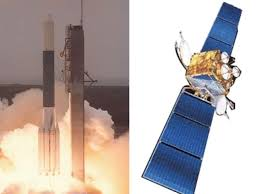INSAT-1A: India’s First Operational Communication & Meteorology Satellite
INSAT-1A was India’s first multipurpose geostationary satellite, marking the beginning of the Indian National Satellite System (INSAT). It played a crucial role in meteorology, telecommunications, and nationwide TV broadcasting.
Launch Date: 10 April 1982
Launch Vehicle: Delta-3920 Rocket (USA)
Launch Site: Cape Canaveral, Florida, USA
Orbit: Geostationary (74°E longitude)
Mass: 1,152 kg
Mission Life: Failed after 6 months (expected life: 7 years)
Meteorological Observations: First Indian satellite to provide cloud imagery and weather data for forecasting
Telecommunications: Supported telephone, radio, and data communication services across India
TV Broadcasting & Programme Distribution: Enabled direct nationwide TV broadcasts
Data Distribution: Transmitted meteorological and disaster-related information
Despite its promising capabilities, INSAT-1A failed prematurely due to:
Failure of the attitude control system, leading to loss of stabilization
Power system malfunction, rendering the satellite inoperative
Due to INSAT-1A’s early failure, ISRO quickly launched INSAT-1B on 30 August 1983, which successfully took over its intended functions.
Marked India’s entry into space-based communication and weather monitoring
Laid the foundation for the highly successful INSAT series, including INSAT-1B, INSAT-2 series, and later GSAT satellites
Strengthened India’s ability to broadcast TV across remote regions and improve disaster management through satellite meteorology
Despite its short lifespan, INSAT-1A was a landmark mission, paving the way for India’s future space-based telecommunications and meteorological advancements.







